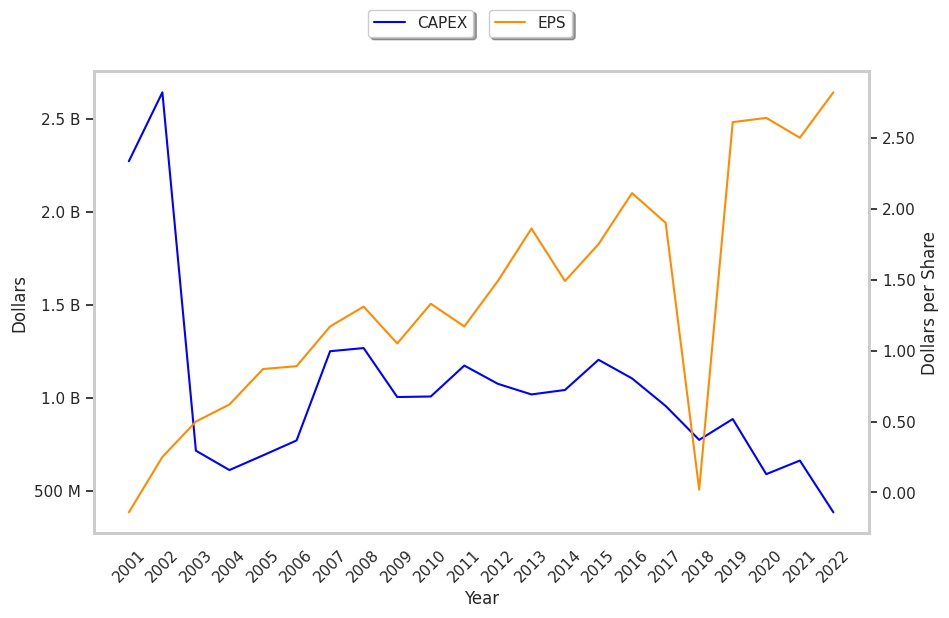Communication Equipment company Cisco Systems is taking Wall Street by surprise today, falling to $47.37 and marking a -11.1% change compared to the S&P 500, which moved 0.0%. CSCO is -11.19% below its average analyst target price of $53.34, which implies there is more upside for the stock.
As such, the average analyst rates it at buy. Over the last year, Cisco Systems has underperfomed the S&P 500 by -13.0%, moving 2.0%.
Cisco Systems, Inc. designs, manufactures, and sells Internet Protocol based networking and other products related to the communications and information technology industry in the Americas, Europe, the Middle East, Africa, the Asia Pacific, Japan, and China. The company is in the communication services sector, which includes primarily companies with a cyclical profile whose share price is correlated with macro economic cycles. The exception is large telecom companies, which are more defensive in nature since their share prices have a looser correlation with recessions.
Cisco Systems's trailing 12 month P/E ratio is 15.4, based on its trailing EPS of $3.07. The company has a forward P/E ratio of 12.2 according to its forward EPS of $3.87 -- which is an estimate of what its earnings will look like in the next quarter. The P/E ratio is the company's share price divided by its earnings per share. In other words, it represents how much investors are willing to spend for each dollar of the company's earnings (revenues minus the cost of goods sold, taxes, and overhead). As of the first quarter of 2023, the telecommunications sector has an average P/E ratio of 18.85, and the average for the S&P 500 is 15.97.
To better understand CSCO’s valuation, we can divide its price to earnings ratio by its projected five-year growth rate, which gives us its price to earnings, or PEG ratio. Considering the P/E ratio in the context of growth is important, because many companies that are undervalued in terms of earnings are actually overvalued in terms of growth.
Cisco Systems’s PEG is 2.43, which indicates that the company is overvalued compared to its growth prospects. Bear in mind that PEG ratios have limits to their relevance, since they are based on future growth estimates that may not turn out as expected.
An analysis of the company's gross profit margins can help us understand its long term profitability and market position. Gross profits are the company's revenue minus the cost of goods only, and unlike earnings, don't take into account taxes and overhead. Here's an overview of Cisco Systems's gross profit margin trends:
| Date Reported | Revenue ($ k) | Cost of Revenue ($ k) | Gross Margins (%) | YoY Growth (%) |
|---|---|---|---|---|
| 2023 | 56,998,000 | 21,245,000 | 63 | 0.0 |
| 2022 | 51,557,000 | 19,309,000 | 63 | -1.56 |
| 2021 | 49,818,000 | 19,061,000 | 64 | 0.0 |
| 2020 | 49,301,000 | 18,063,000 | 64 | 1.59 |
| 2019 | 51,904,000 | 19,238,000 | 63 | 1.61 |
| 2018 | 49,330,000 | 18,724,000 | 62 |
- Average gross margin: 63.2 %
- Average gross margin growth rate: 0.2 %
- Coefficient of variability (lower numbers indicating more stability): 2.1 %
We can see from the above that Cisco Systems's gross margins are very strong. Potential investors in the stock will want to determine what factors, if any, could derail this attractive growth story.
To deepen our understanding of the company's finances, we should study the effect of its depreciation and capital expenditures on the company's bottom line. We can see the effect of these additional factors in Cisco Systems's free cash flow, which was $19.04 Billion as of its most recent annual report. The balance of cash flows represents the capital that is available for re-investment in the business, or for payouts to equity investors as dividends. The company's average cash flow over the last 4 years has been $14.83 Billion and they've been growing at an average rate of 6.8%. CSCO's weak free cash flow trend shows that it might not be able to sustain its dividend payments, which over the last 12 months has yielded 2.2% to investors. Cutting the dividend can compound a company's problems by causing investors to sell their shares, which further pushes down its stock price.
Another valuation metric for analyzing a stock is its Price to Book (P/B) Ratio, which consists in its share price divided by its book value per share. The book value refers to the present liquidation value of the company, as if it sold all of its assets and paid off all debts). Cisco systems's P/B ratio is 4.25 -- in other words, the market value of the company exceeds its book value by a factor of more than 4, so the company's assets may be overvalued compared to the average P/B ratio of the Telecommunications sector, which stands at 3.12 as of the first quarter of 2023.
Cisco Systems is likely fairly valued at today's prices because it has a very low P/E ratio, an elevated P/B ratio, and irregular cash flows with an upwards trend. The stock has strong growth indicators because of its strong margins with a stable trend, and an average PEG ratio. We hope this preliminary analysis will encourage you to do your own research into CSCO's fundamental values -- especially their trends over the last few years, which provide the clearest picture of the company's valuation.



